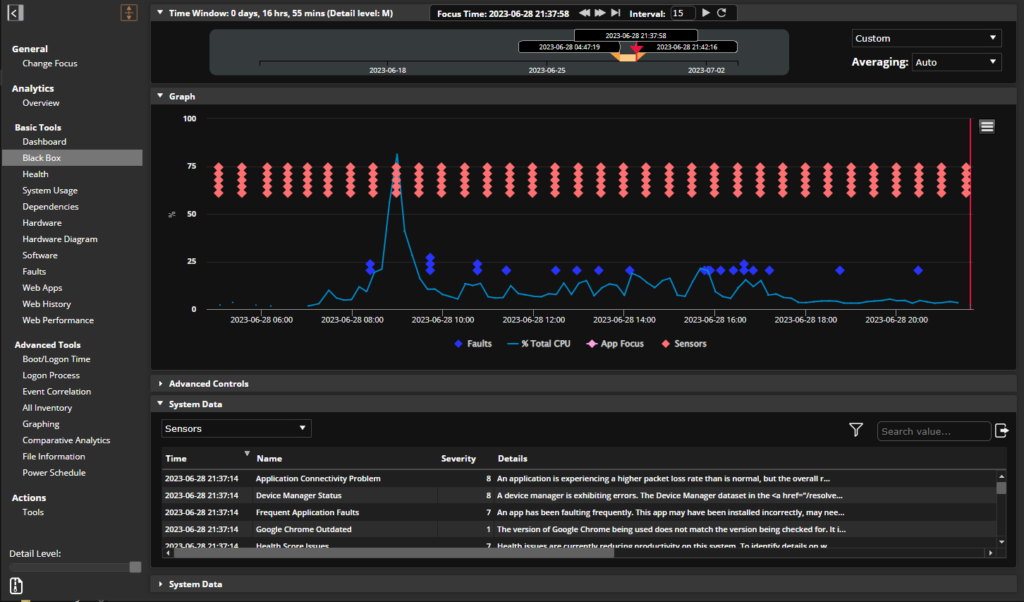Last week, in a flurry of caffeine-induced inspiration, I started thinking about IT’s role in open-plan offices. I already knew that I wanted to communicate how need-based procurement—that is, using data to understand what end users need and acquiring technology to meet those needs—can alter employees’ engagement with their workspaces.
When I started to dig into the research, it quickly became clear that IT has an even larger stake in the success of open-plan offices than I’d originally thought. And that no one seems to be talking about it (at least not explicitly).
Mobile devices, hot-desking, work from home, flextime, virtual desktops, BYOD—these are just a few of the ways that technology can intersect with an open office.
Given that around 70% of U.S. offices have some version of an open layout, it’s likely that many IT teams have already felt the effects of the changing workplace. But there is a big difference between reacting to issues that arise as a result of change (aka “firefighting”) and proactively analyzing data to manage end-user experience. A difference so big, in fact, that it could be key to making open office work work.
What separates reviled from respected offices?
It turns out that organizations that eschew walls may be putting up new, invisible barriers. Lack of privacy and difficulty concentrating are two of the most common complaints about open offices. In addition to cutting into productivity, employee coping mechanisms (e.g. avoiding talking so as not to contribute to the din) can negate oft-touted benefits like increased collaboration.
While I was researching, patterns started to emerge that answered why only some open-plan offices succeed at driving innovation:
The Flexibility Factor
Team meeting rooms and designated calling locations give employees more appropriate settings for extended conversations while privacy nooks provide space for deep work and concentration.
Research by Steelcase, an office furniture company, found that flexible office arrangements correlated strongly with engagement levels, with 88% of highly-engaged workers reporting the option to decide where they want to work depending on what they’re doing.
Similarly, Gallup research has shown that employees who have the flexibility to change up where they’re working are 30% more likely to be engaged at work.
A Sense of Place
Feeling connected to the workspace has similar benefits. The same Gallup report concluded that employees who have a place of their own at work (even just a locker or a chair) are 40% more likely to be engaged.
A study by Harvard Business Review also found that employees who identify with their workspace “report more engagement in their work, more communication with their peers, and a stronger connection to the company.”
For many of us, the technology we work with every day—be it a physical or virtual desktop, laptop, etc.—is the one aspect of the workplace that is quintessentially “ours.” That sense of ownership can make us resistant to change, which takes us to the final success factor:
Employee Buy-In
Clearly communicating why shifting to an open office will benefit the organization is key to a successful move according to Harvard Business Review: “when workers were not prepared with a clear vision of the space beforehand, they were more likely to perceive the space as a way to cut costs and expressed more resistance and dissatisfaction.”
Planning with the employee experience in mind and communicating intentions before moving to an open-plan layout helps build positive sentiment around the change. Otherwise, mistrust and resentment can negate any productivity or creativity benefits.
So, what can IT do for the open-plan office?
If all is well, IT is the barely perceptible layer making sure the business keeps ticking. Turns out it’s no different in open offices.
IT pros can help facilitate more flexible, personalized, and positive experiences for employees by providing resources that are tailored to users’ needs and work styles. That means understanding and planning for things like mobility, application usage and performance, and hardware requirements.
Regardless of workplace design, many of us spend most of our work days with a screen, not with a person. And that’s not likely to change anytime soon. Lakeside understands that employees house most of their productive processes in the desktop, which is why SysTrack monitors at the endpoint level, giving IT direct visibility into resource needs, end-user experience, and productivity roadblocks.
You can hear the rest of our thoughts on IT’s role in the open office by tuning in to the latest episode of the Lifeguard IT podcast, “Can IT Save the Open Office?” on iTunes, Google Play.
Already a subscriber? Tell us what you want to hear next! Episode suggestions can be sent to [email protected].
Subscribe to the Lakeside Newsletter
Receive platform tips, release updates, news and more



